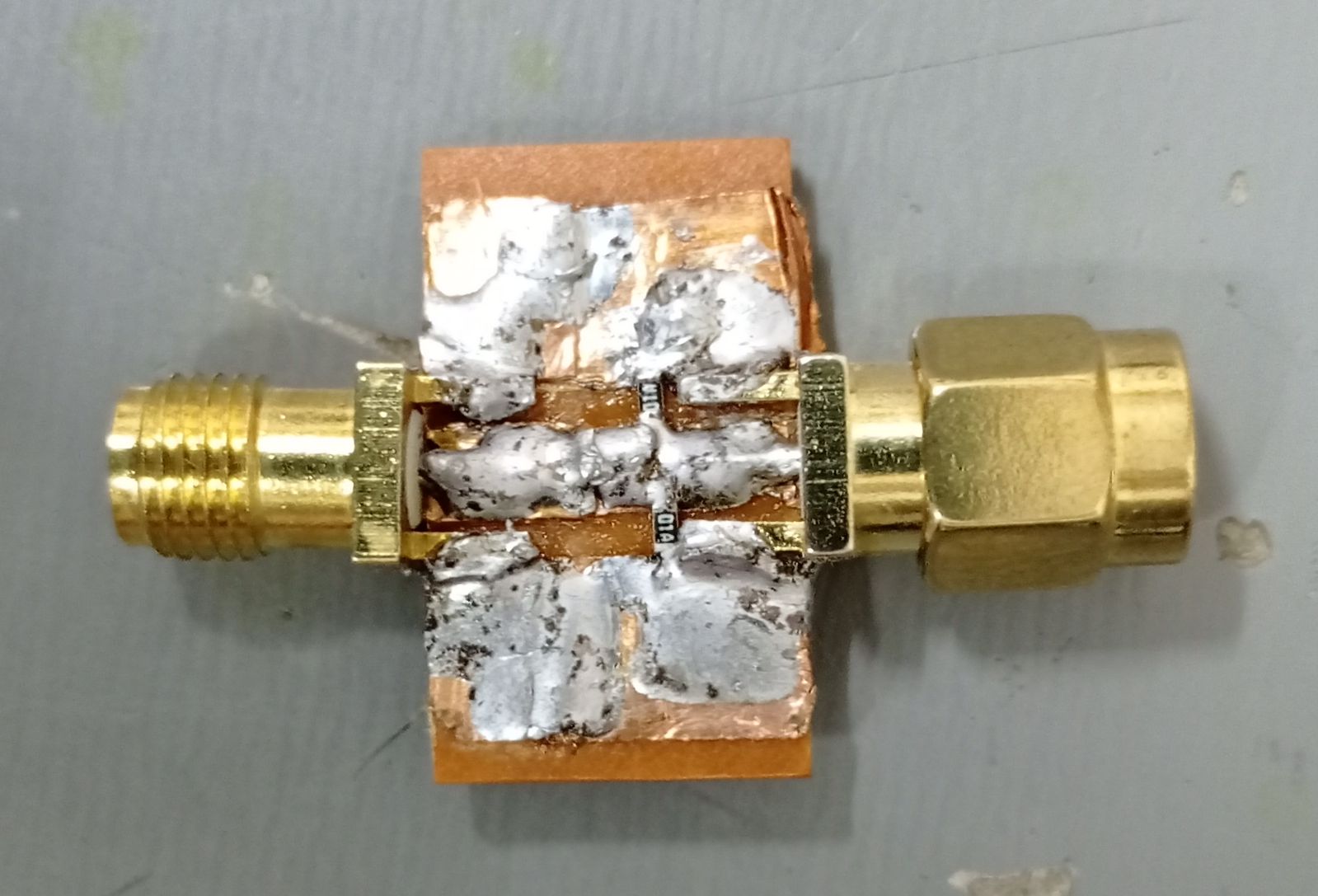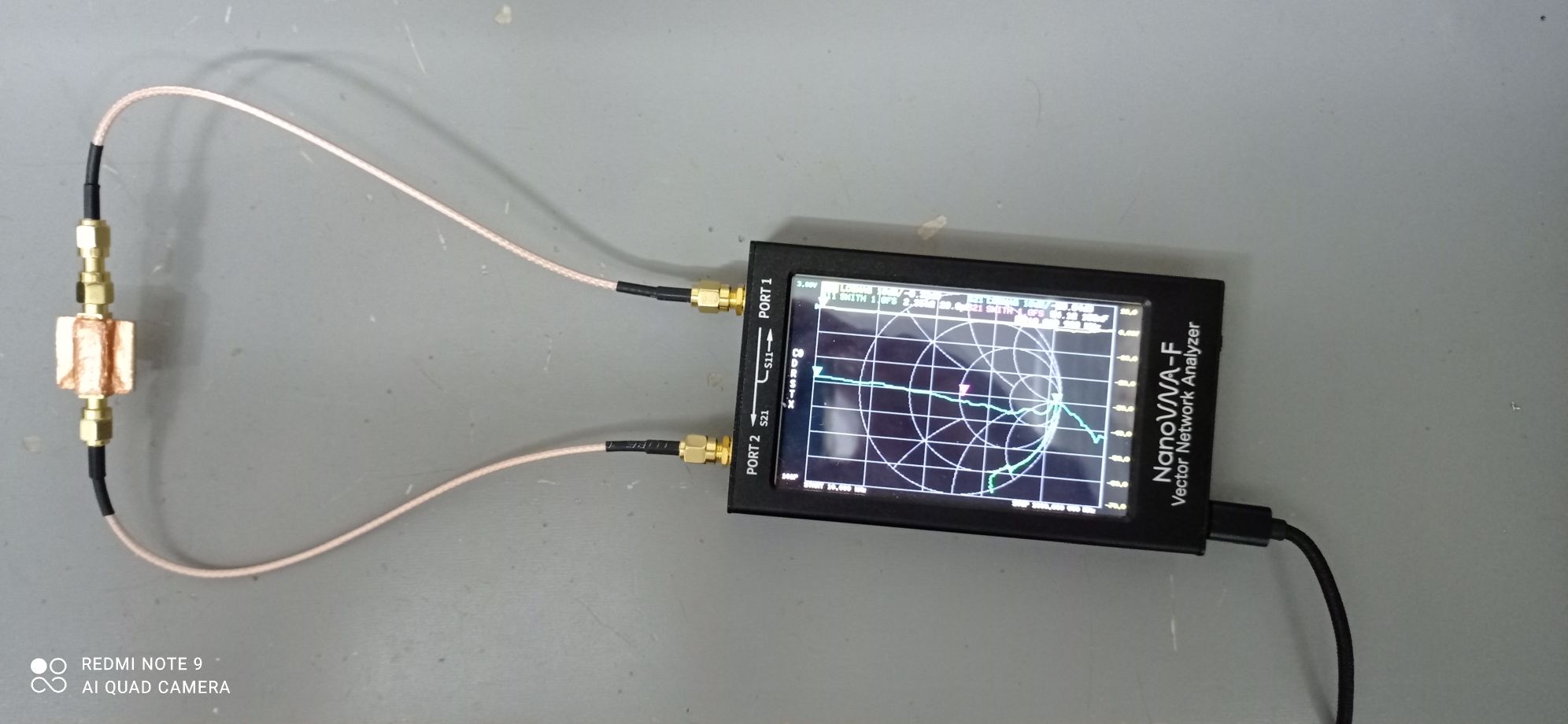Post History
I thought I understood the theory of scattering parameters, smith charts etc. until I tried a practical example. The following stupid example is supposed to be a microstrip line shunted by two 100...
#1: Initial revision
Understanding the s11 and s21 coefficients of a microstrip line with resistor to ground
I thought I understood the theory of scattering parameters, smith charts etc. until I tried a practical example. The following stupid example is supposed to be a microstrip line shunted by two 100 Ohm resistors to ground, that is, an equivalent resistance of 50 Ohm (also checked at DC by an ammeter).  Note: the bottom of the plate is copper plated. Now, I cannot afford a good network analyzer, so I bought a nanoVNA network analyzer (image below). Admittedly, this is a toy, but it is a well regarded toy, especially for frequencies below 300MHz. So, I assume it gives not so bad results for this experiment.  Note: the analyzer has been calibrated. Testing the example above, here are the results returned by the nanoVNA:  The yellow line is s11, approximately -9db, and the blue line is s21, approximately -3.53 db, measured and constant in the range 10kHz - 1GHz. Now, -9 dB is equivalent to a ratio of 0.34 approximately, and -3.53 db is equivalent to a ratio of 0.66 approximately. I expected S11 to be near 0. Regarding s21, I didn't know exactly what to expect. Notice that these measurements begin at 10 kHz, where everything should behave like the theory, due to the very low frequency. Trying to understand these values, I finally found an excellent [article](https://cds.cern.ch/record/1415639/files/p67.pdf), full of practical data. Now, according to fig. 1, it seems that the stimulus has an output impedance of 50 ohm. This is my first question: **Question 1:** Should we assume that network analyzers are built in such a way the stimulus (signal toward the port) has an output impedance of 50 ohm? **Question 2:** How to understand the above results ?


















